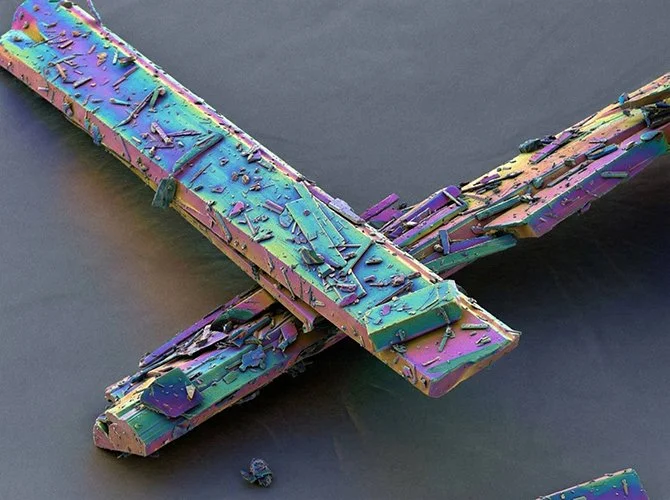A Tribute to Daniel Siebert
Salvinorin A crystals (scanning electron microscopy with false colors)
Daniel J. Siebert, discoverer of the hallucinogenic effects of salvinorin A, died in 2024. As one of the many researchers who built on his work, here I will pay tribute to his remarkable scientific discoveries. Siebert was a self-trained but rigorous scientist and a pioneering self-experimenter. He was one of the most significant figures in recent ethnopharmacology, and helped to spark the ongoing psychedelic renaissance.
Before Siebert's groundbreaking work, Salvia divinorum was an obscure 'legal high' with weak hallucinogenic effects, attracting little interest from scientists or recreational drug users. The compound salvinorin A had been isolated from the plant, and appeared to weakly sedate mice, but the compound responsible for the plant's hallucinogenic effects remained unknown. Siebert settled this question and overturned conventional wisdom on several others. Despite having no access to a chemistry lab, he isolated salvinorin A. In a series of careful self-experiments with friends, he then showed that this compound was responsible for the plant's hallucinogenic properties, with subjective effects indistinguishable from those of the herbal brew. He published the work under his own name in a respected scientific journal.
This work proved revolutionary. Far from being weakly active, salvinorin A is the most potent hallucinogen ever discovered in nature, with overwhelming effects at doses as low as one milligram. Siebert showed rigorously that the compound was almost inactive orally, thus explaining the weak effects others had experienced after swallowing the leaves or their juice. He developed practical ways to deliver small doses, sublingually or by vaporization. He also measured the rapid onset and offset of the compound. These findings were later confirmed at universities around the world, lifting the compound from obscurity to a hot research topic.
A born scientist, Siebert also did rigorous research on other topics. Still with no lab access, he showed where in the plant terpenoids like salvinorin A are synthesized and stored, greatly simplifying isolation. He also conducted an informal double-blind randomized controlled trial to test a rumour that Salvia splendens was psychoactive. He showed by example that rigorous self-experiments in psychopharmacology can still be performed and published, without an academic affiliation, and can yield hugely influential discoveries. He will be remembered.


